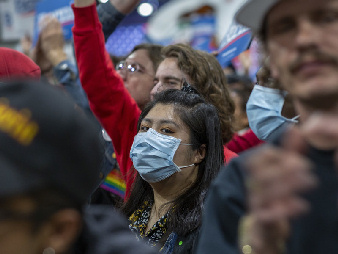Preliminary report out on American Airlines crash in Jamaica
KINGSTON, Jamaica – Jamaica’s Minister of Transport and Works, Hon. Mike Henry, says preliminary investigations into the December 22 accident involving American Airlines flight 331, at the Norman Manley International Airport (NMIA), have indicated no mechanical malfunctioning of the aircraft.
Mr. Henry was speaking to journalists, Wednesday (January 6), at the weekly Post-Cabinet press briefing at the Office of the Prime Minister (OPM), at Jamaica House, Kingston.
According to the Minister, at this point, the investigations have revealed no mechanical problems with any aspect of the Boeing 737-823 aircraft. He said that examination of the Flight Data Recorder (FDR), by the Jamaica Civil Aviation Authority (JCAA) and the United States National Transportation Safety Board (NTSB), did not indicate any anomalies or malfunctions with the operation of the brakes, spoilers or thrust reversers.
“The ground-based navigation and landing aids were evaluated by a check aircraft after the accident, and were determined to be functioning normally,” he also informed.
The American Airlines’ aircraft overshot the NMIA runway at approximately 10:25pm on Tuesday (December 22), as the pilots attempted landing on arrival from Miami, Florida in the United States. There were 154 persons on board the aircraft, including the pilot, co-pilot and four flight attendants. There were no fatalities, but numerous injuries were reported.
The Transport Minister gave an outline of some information, which has been unearthed since the start of the inquiries into the incident.
He said that, according to the Norman Manley Tower Controller, as the aircraft was approaching Jamaica, the Automatic Terminal Information Service for the airport, which relays recorded airport and weather information, was broadcasting Runway 12 as the runway designated for arrivals.
He added that the crew contacted Jamaican Air Traffic Control and requested the Instrument Landing System approach for Runway 12. The controller advised the crew of tailwind conditions on Runway 12 and offered them a circling approach for landing on Runway 30.
“The crew, however, repeated their request for Runway 12, and was subsequently cleared to land on that runway, with the controller also advising the crew that the runway was wet,” he said.
“The Captain, who was the pilot flying, reported that he used the Heads Up Display (HUD) during the approach and landing,” he noted.
The Transport Minister also told journalists that the crew reported that, after descending through the cloud cover, they made visual contact with the runway, at between 1,000 feet and 700 feet above ground level.
“According to the FDR, the aircraft was travelling at the landing airspeed of 148 knots, with a ground speed of 162 knots, with a tailwind component of 14 knots, when the wheels made initial contact at about 4,000 feet down the 8,900-foot runway.
“The FDR further indicated that the aircraft bounced once, then settled onto the runway, the auto brakes then engaged and reverse thrust and the spoilers were deployed,” said the minister.
He said the crew reported that, at that point, they felt that the aircraft did not decelerate normally, and they subsequently applied maximum manual (pedal) braking.
“The FDR showed that the aircraft decelerated normally for an auto brake three (3) setting. The FDR also indicated that during the landing rollout, the aircraft veered to the left of the centerline and departed the end of the runway at a groundspeed of 63 knots,” informed Minister Henry.
He noted that examination of the crash site indicated that the aircraft then exited the runway, went through the perimeter fence, crossed a road, and came to a rest on a rock strewn beach about 175 feet beyond the departure end of Runway 12 and about 40 feet from the water line.
“The aircraft’s fuselage was broken into three major pieces. The right engine, right in board aft trailing edge flap and the right main landing gear separated from the aircraft during the accident sequence. The left winglet was almost broken off the wing,” he also informed.
The Transport Minister said the FDR also showed that the rate of deceleration appeared normal for a wet runway. He said an evaluation of the runway surface conditions at the time of landing was also in progress, to determine the effect of this on the braking forces.
Mr. Henry further added that the flight plan designated Grand Cayman as the alternate airport and the aircraft had sufficient fuel on board to reach that destination. Investigations also revealed that the aircraft was slightly below the maximum permitted landing weight when it landed in Kingston.
He said the wreckage of the aircraft remains under the control of the JCAA, through the NTSB, and will be shipped to the USA.
“There it will be kept in a secure facility and be available for further examination, until such time as it is no longer required for investigation,” said Mr. Henry.
He said the JCAA continues its investigation of the incident, and will provide additional updates as progress is made.


